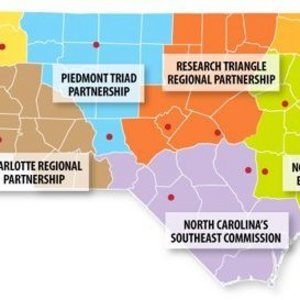BCNC publishes woody biomass assessment

Biofuels Center of North Carolina
June 19, 2013
BY Erin Krueger
The Biofuels Center of North Carolina recently completed a statewide woody biomass assessment in cooperation with Gelbert, Fullbright & Randolph Forestry Consultants and North Carolina’s seven economic development regions. According to the BCNC, work on the three-part analysis kicked off in 2011.
The resulting report, titled the “Statewide Woody Biomass Project,” outlines three areas of analysis for each of the seven economic development regions. First, it quantifies wood resources on a county-by-county basis, including price points, land use changes and regional competition for woody biomass. Second, the analysis determines the best location for biofuels industrial sites and assesses the infrastructure available at each site. Finally, the report further refines the wood resources to support bankable data for each location.
“This has never been done by any state to our knowledge, certainly not on this scale, and it is unheard of in the forest management industry,” said Terry Godwin, harvest forester with GFR Forestry Consultants and lead developer for the analysis, in a statement published by the BCNC. “With this assessment, the Biofuels Center will bring an incredible advantage to North Carolina when competing for biofuels companies.”
On a statewide basis, more than half of North Carolina’s land area is forested, with approximately 90 percent of its 17.6 million forested acres under private ownership. Biofuels Center president and CEO Steven Burke emphasized the significance of assessing statewide wood resources for biofuels production. “North Carolina’s wood resources are key to our successfully gaining large biofuels capacity,” said Burke. “This study quantifies and makes real our ability to support wood-to-fuels technology companies—and gives us large competitive advantage to bring them here over many years.”
Highlights for each of the state’s seven economic development regions include:
Advertisement
Advertisement
AdvantageWest Economic Development Group: The AdvantageWest region of North Carolina includes 4.2 million acres of timberland. The analysis notes 18.9 million tons of pine pulpwood and 138.6 million tons of hardwood pulpwood are potentially available for use by the biofuels industry.
Charlotte Regional Partnership: The Charlotte Regional Partnership includes 2.6 million acres of timberland, resulting in an estimated 26.5 million tons of pine pulpwood and 77.4 million tons of hardwood pulpwood available for use as biofuel feedstock.
Piedmont Triad Partnership: The Piedmont Triad Partnership region includes approximately 2.1 million acres of timberland, with 10 million tons of pine pulpwood and 28 million tons of hardwood pulpwood potentially available to the biofuels industry.
Research Triangle Regional Partnership: The Research Triangle Regional Partnership region is home to an estimated 2.3 million acres of timberland, supporting 21.9 million tons of pine pulpwood and 39.2 million tons of hardwood pulpwood potentially available for use by the biofuels industry.
Advertisement
Advertisement
Eastern Region: The Eastern Region of North Carolina includes approximately 2.3 million acres of timberland, with 23.3 million tons of pine pulpwood and 38 million tons of hardwood pulpwood potentially available for use as biofuel feedstock.
Southeast Commission: The Southeast Commission region features about 3 million areas of timberland, supporting an estimated 29.5 million tons of pine pulpwood and 50.1 million tons of hardwood pulpwood for potential use by the biofuels industry.
Northeast Commission: The Northeast Commission region of North Carolina includes an estimated 2.5 million acres of timberland supporting 11.8 million tons of pipe pulpwood and 25.3 million tons of hardwood pulpwood that could be used as biofuel feedstock.
The full assessment summary for each region is available on the BCNC website.
Related Stories
The U.S Department of Energy Bioenergy Technologies Office, in partnership with the Algae Foundation and NREL, on July 21 announced the grand champion and top four winning teams of the 2023 - 2025 U.S. DOE AlgaePrize Competition.
The USDA significantly increased its estimate for 2025-’26 soybean oil use in biofuel production in its latest World Agricultural Supply and Demand Estimates report, released July 11. The outlook for soybean production was revised down.
U.S. fuel ethanol capacity fell slightly in April, while biodiesel and renewable diesel capacity held steady, according to data released by the U.S. EIA on June 30. Feedstock consumption was down when compared to the previous month.
The U.S. EPA on July 8 hosted virtual public hearing to gather input on the agency’s recently released proposed rule to set 2026 and 2027 RFS RVOs. Members of the biofuel industry were among those to offer testimony during the event.
The USDA’s Risk Management Agency is implementing multiple changes to the Camelina pilot insurance program for the 2026 and succeeding crop years. The changes will expand coverage options and provide greater flexibility for producers.
Upcoming Events










